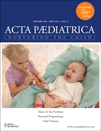The influence of music on aEEG activity in neurologically healthy newborns ≥32 weeks’ gestational age
Abstract
Aim: Music is increasingly being used in neonatal intensive care units to aid neurodevelopmental care. The aim of this pilot study was to examine the possible effects of music on quiet sleep (QS) in neurologically healthy newborns.
Methods: Twenty newborns ≥32 weeks’ gestational age admitted to the neonatal intensive care unit at The Royal Children’s Hospital in Melbourne for specialist consultation were randomly assigned to experimental or control groups. Ten subjects were exposed to music (Music for Dreaming, (Sound Impressions, Pty. Ltd.) using a CD player (50–55 decibel A). Amplitude-integrated EEG was recorded on the BrainZ Monitor (BRM2, Version 8.0, Natus). Background pattern, presence and quality of sleep–wake cycles (SWC) were assessed before and after exposure to music.
Results: All 20 subjects showed continuous background patterns with developing SWC. Whereas no subject in the control group showed differences in their QS and eight patients in the intervention group showed lower minimum amplitudes of their QS after music exposure. Also, the length of QS and interval between QS epochs became progressively longer in all ten subjects of the intervention group.
Conclusion: We report a trend to more mature SWC in subjects who were exposed to music when compared to controls suggesting that there might be a small effect of music on quiet sleep in newborns.




